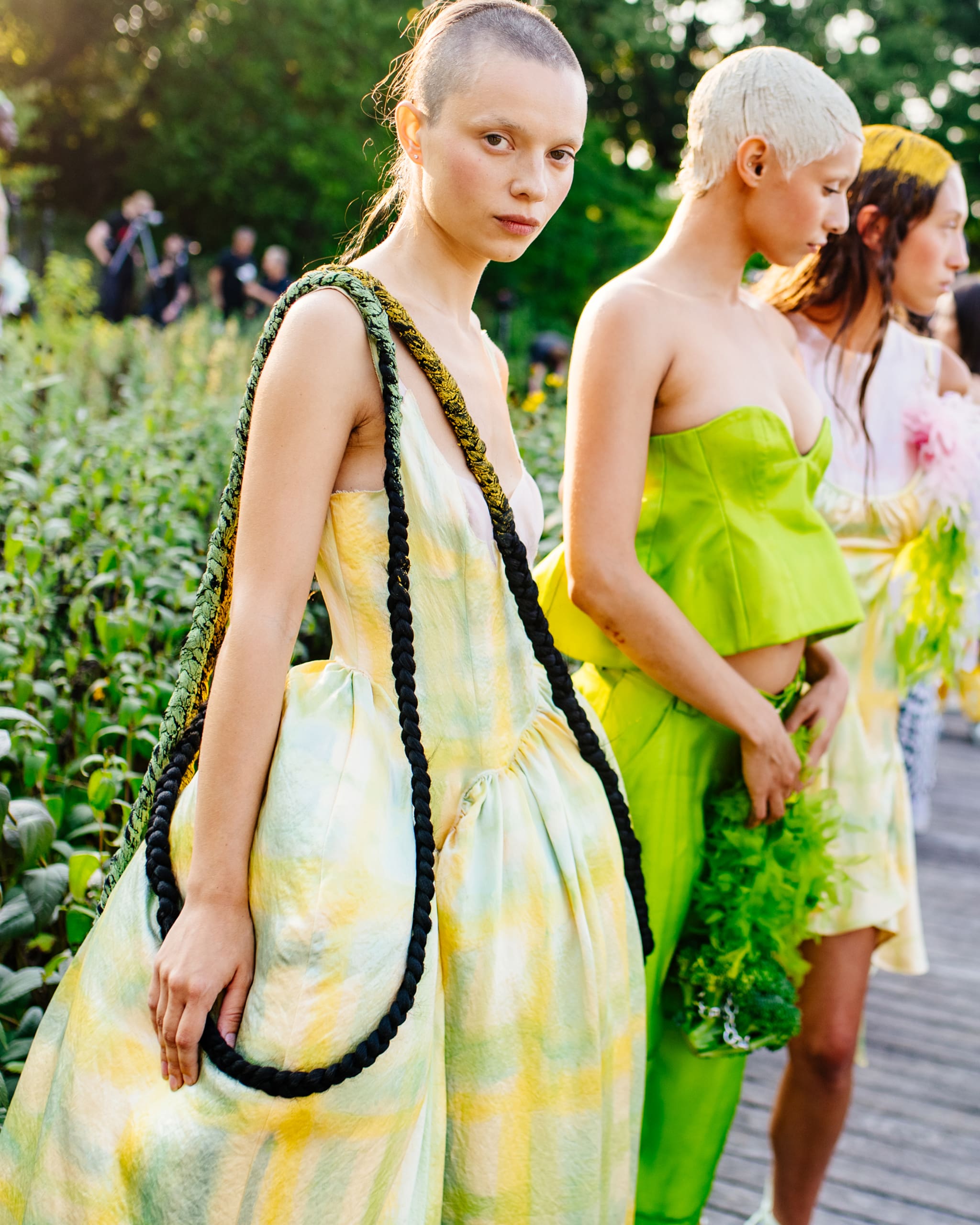Photographed by Hunter Abrams | @hunterabrams
We know that greenwashing is rife in fashion, as brands look to attract consumers that are increasingly eco-conscious. In fact, a study by Changing Markets Foundation in 2022 reported that nearly 60 percent of green claims made by 12 major brands in the UK and Europe were unsubstantiated or misleading. Meanwhile, a 2020 European Commission study found that a quarter of misleading environmental claims came from the fashion industry, suggesting it’s the worst culprit when it comes to greenwashing.
Now, a new proposal from the European Union is likely to make greenwashing—including the use of buzzwords such as “sustainable,” “eco-friendly,” and “responsible,” without any further information—much more difficult in the future. The Green Claims Directive, which is expected to come into effect by 2024, means that any environmental claims made by brands will have to be backed up by scientific evidence. “I think this is going to put [many] fashion brands in a tricky situation,” George Harding-Rolls, campaign manager at Changing Markets Foundation, tells Vogue.“What the [industry] is saying about the [environmental] progress being made is not actually reflected in reality.”
Indeed, experts believe that the crackdown on greenwashing may usher in a new era of “greenhushing”—a term coined by Treehugger in 2008 to describe the phenomenon of companies deliberately not communicating about their environmental initiatives, for fear of being called out. “Brands could choose to avoid making green claims at all, which is what I think they’ll do,” Harding-Rolls continues.
It’s a trend that’s already happening in fashion and beyond. A report published by environmental consultancy South Pole in October found that one in four companies surveyed – which included a number of fashion brands – had set science-based targets but did not plan to publicize them. “There is increased scrutiny by the media, NGOs, and consumers around what companies are doing in this area, [which is why] companies may feel warier than before about communicating targets,” Karine Basso, one of the report’s contributors, explains.
While tackling greenwashing is one thing, some believe the rise of greenhushing could actually slow down environmental progress. If fewer brands are sharing what they’re doing publicly, there may be less incentive for others to adopt more eco-friendly practices as a result. “It is important that leaders are really leading and setting the example,” Basso says. “[Companies] sharing their experience can inspire others and [lead to] peer pressure.”
Others, however, are less convinced that greenhushing will become a major issue in fashion. “What concerns us is the obligation not to greenwash, and if you’re not sure that you’re not greenwashing, you should greenhush,” Tonje Drevland, assistant director, supervisory department, at the Norwegian Consumer Authority, says.
Even without the EU directive in place, brands are becoming increasingly careful about environmental claims in their marketing. In recent months, we’ve seen H&M drop its “Conscious” label following an investigation by the Netherlands Authority for Consumer & Markets (after which, the brand acknowledged that “the information on sustainability on our website could have been provided more clearly and more comprehensive”), while ASOS said it “proactively” removed its “Responsible Edit” ahead of an investigation by the UK’s Competition and Markets Authority.
In fact, greenhushing may be a crucial part of the process, showing just how much work still needs to be done when it comes to creating a more sustainable fashion industry. “If companies are not greenwashing they can still [make the claims] anyway,” Harding-Rolls concludes. “[Tackling] greenwashing is just about making sure that we can see the wood for the trees—20 years of voluntary efforts haven’t really got us anywhere.”
This article was originally published on British Vogue.
